Cowboys of the old west were no strangers to self-reliance and carried the gear to prove it. American cowboy EDC had several overlaps with modern EDC, with a few specialized (and a few dated) exceptions.
Even though cowboys are depicted in TV and movies as action-packed gunslingers, they had a ruggedly practical job to carry out. They needed gear to get their job done, to pass the time, and to survive on their own.
Well, let’s get on to the list without poking around too much longer.
Contents (Jump to a section)
- Firearm
- Ammunition
- Knife
- Canteen
- Food
- Cookware
- Tin Cup
- Bedroll
- Rope
- Tinder Box
- Tobacco
- Saddlebags
- Horse Feed
- Spurs
- Hat
- Gloves
- Bandana
- Soap & Towel
- First Aid & Medicines
- Piggin Strings
- Musical Instrument
- Bible
Firearm
Cowboys carried a gun for protection. The most common type was the Colt Single Action Army revolver, which was also known as the “Peacemaker.” It had a six-round cylinder and was known for its reliability and accuracy.
Some other popular models included:
- Winchester Model 1873 – this popular lever-action rifle for hunting and long-range shooting had a 24-inch barrel and fired a .44-40 cartridge.
- Winchester Model 1897 – this pump-action shotgun would help protect cowboys from predators
- Derringers – not as popular as revolvers or rifles, but some cowboys packed these small handguns as their backup weapons.
- Pepperboxes – least common among cowboys, some would use these multi-barrel revolvers.
Keeping themselves safe from bandits and predators, as well as hunting game for food made firearms a priority in the old west.
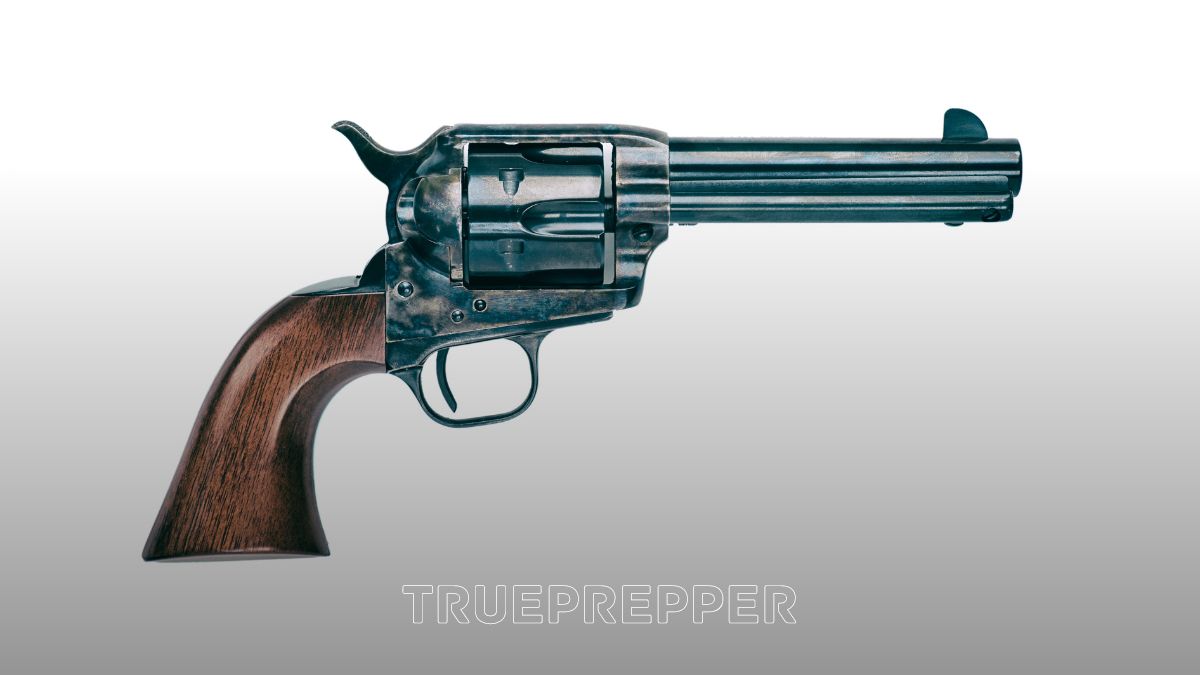
Ammunition
Cowboys carried extra bullets for their guns in a cartridge belt or bandolier. The belt or bandolier was usually made of leather or canvas and held several rounds of ammunition. This allowed cowboys to quickly reload their guns if needed.
The type of ammo carried depended on the caliber guns they used, so .45 and the .44-40 cartridges were popular.
Knife
Cowboys carried a sharp knife for cutting things like rope and food. Bowie knives and camp knives were the favorites, both being durable and multi-purpose.
A good knife was an essential tool for a cowboy and could be used for a variety of tasks. That hasn’t changed much, and Bowie and camp blade shapes are still used for survival today. The steel, handles, and everything else about them has come a long way though.

Canteen
Cowboys carried a canteen to hold water while on the trail. The canteen was usually made of metal or leather and had a strap that could be worn over the shoulder.
It was an essential item for cowboys, who needed to stay hydrated while working in the hot sun.
Food
Cowboys had to carry food with them on long cattle drives or when they were out on the range for extended periods. Here are some of the food cowboys typically carried:
- Beans – Dried beans were a staple of cowboy food. They were easy to store and could be cooked in a pot over a fire.
- Salt pork – This was a fatty cut of pork that was heavily salted to preserve it. Cowboys would often fry it up for breakfast or use it to flavor beans.
- Biscuits – Biscuits were a common bread item that cowboys carried with them. They could be made ahead of time and were easy to pack.
- Jerky – Jerky was a way to preserve meat without refrigeration. It was usually made from beef or buffalo and was thinly sliced, salted, and dried in the sun or over a fire.
- Coffee – Not exactly a food, but cowboys loved their coffee and often carried coffee beans or grounds with them. They would boil water over a fire and add the coffee for a hot, strong brew.
Cowboys would often cook their meals over an open fire and would use cast iron pans, pots, and Dutch ovens to prepare their food. They also had to be mindful of conserving food and making it last as long as possible since they couldn’t easily restock their supplies while out on the range.
Cookware
Cowboys often carried a cast iron skillet, a coffee pot, and a tin plate and cup for cooking and eating meals while out on the trail.
These items were usually stored in the saddlebags or tied to the saddle.
Tin Cup
A tin cup was a common item carried by cowboys, used for drinking water or coffee. It was lightweight and durable, making it ideal for the range.
They could also cook with the same cup, purifying water and heating food.
Bedroll
Cowboys typically carried a bedroll or blanket for sleeping while out on the trail. The bedroll consisted of a wool blanket or sleeping bag rolled up with a canvas or leather cover. This provided a comfortable place to sleep while on the trail.
Rope
Cowboys carried different types of rope for catching animals and controlling horses. One of the most common types of rope was the lariat, also known as a lasso. It was made of braided rawhide or rope and was used to catch cattle or other animals. Piggin strings were popular enough on their own that they have their own spot on the list.
Cowboys would also carry lead ropes to control their horses while riding or working. There are lots of different types of rope out there- not just our favorite (paracord).
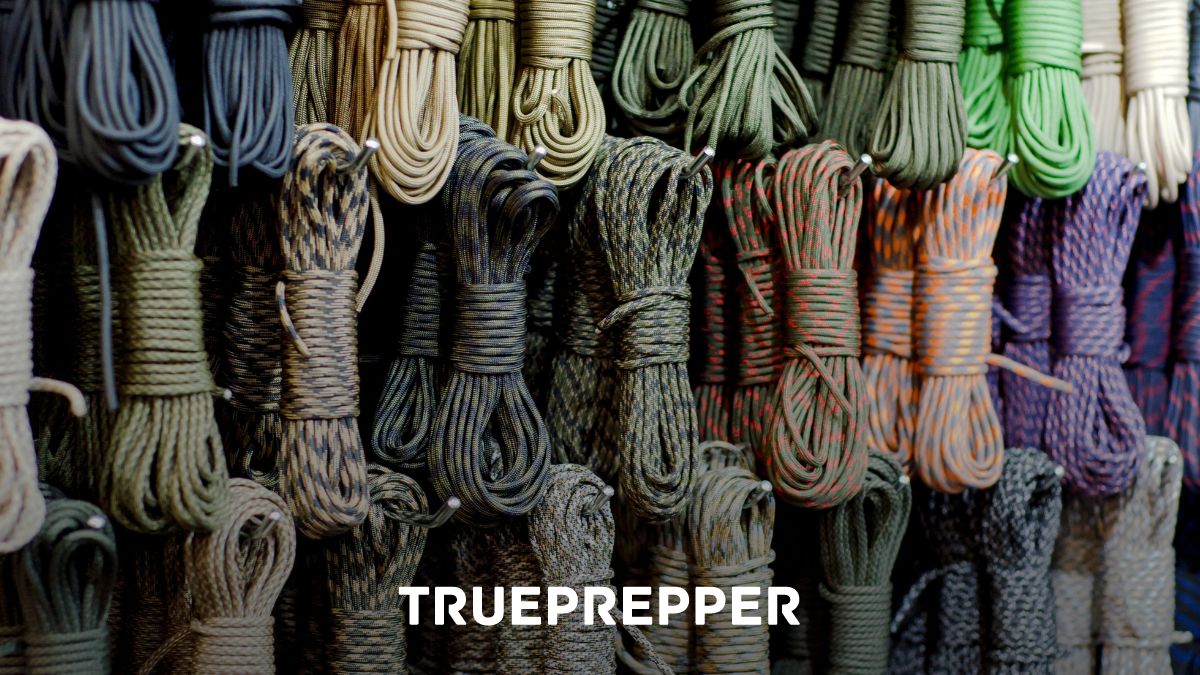
Tinder Box
Cowboys needed a way to start a fire for cooking and warmth and would carry matches or flint and steel in a tinder box for this purpose. Matches were usually kept in a waterproof container, while flint and steel were used to create sparks to start a fire.
Luckily, matches have come a long way and we have some stellar options in waterproof matches now.
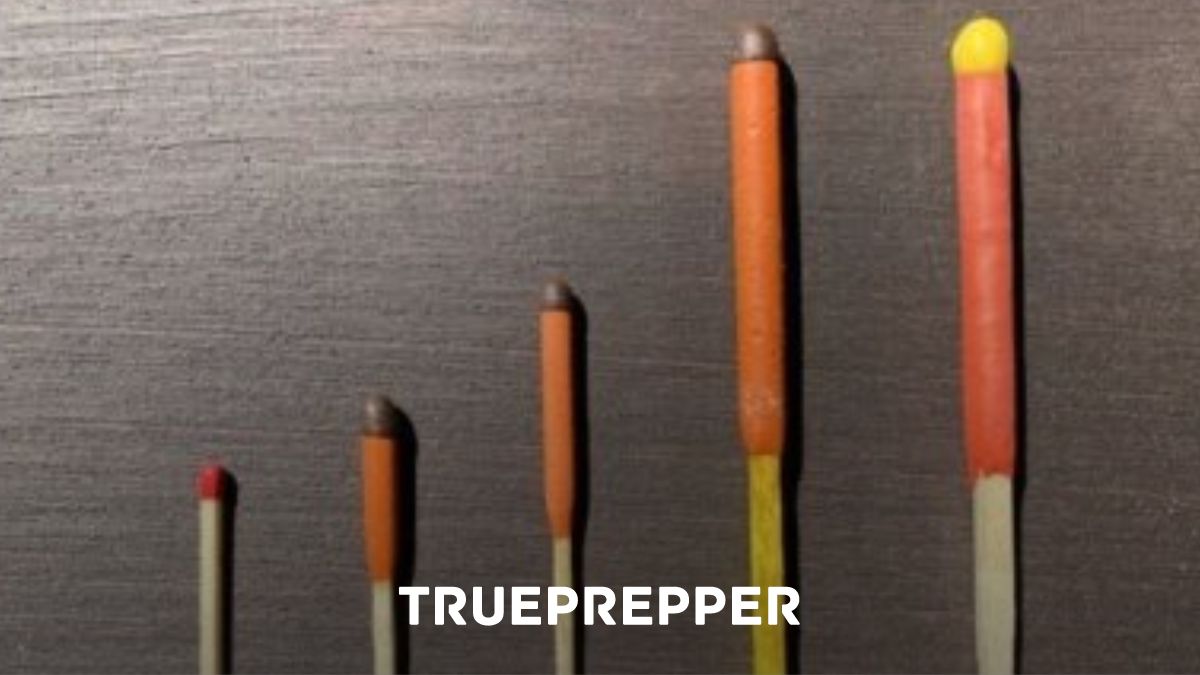
Tobacco
They would also carry tobacco, which was a common vice among cowboys at the time.
Smoking was seen as a way to relax and unwind after a hard day’s work.
Saddlebags
Saddlebags were used to carry various supplies, such as extra ammunition, food, or personal items. They were usually made of leather and attached to the sides of the saddle. Saddlebags allowed cowboys to carry important supplies with them while on horseback.
Horse Feed
Cowboys carried horse feed or treats, such as sugar cubes, to keep their horses healthy and happy. Horses were an essential part of cowboy life, and it was important to take good care of them.
Spurs
Cowboys used spurs or other riding equipment to control their horses while working or riding.

Hat
Cowboys needed protection from the sun, wind, and rain, and typically carried a hat and extra clothing for this purpose. A wide-brimmed hat provided great protection and some would use a rain-slick or poncho as well.
Wide-brimmed hats are still useful and come in at the top of our survival hat reviews.
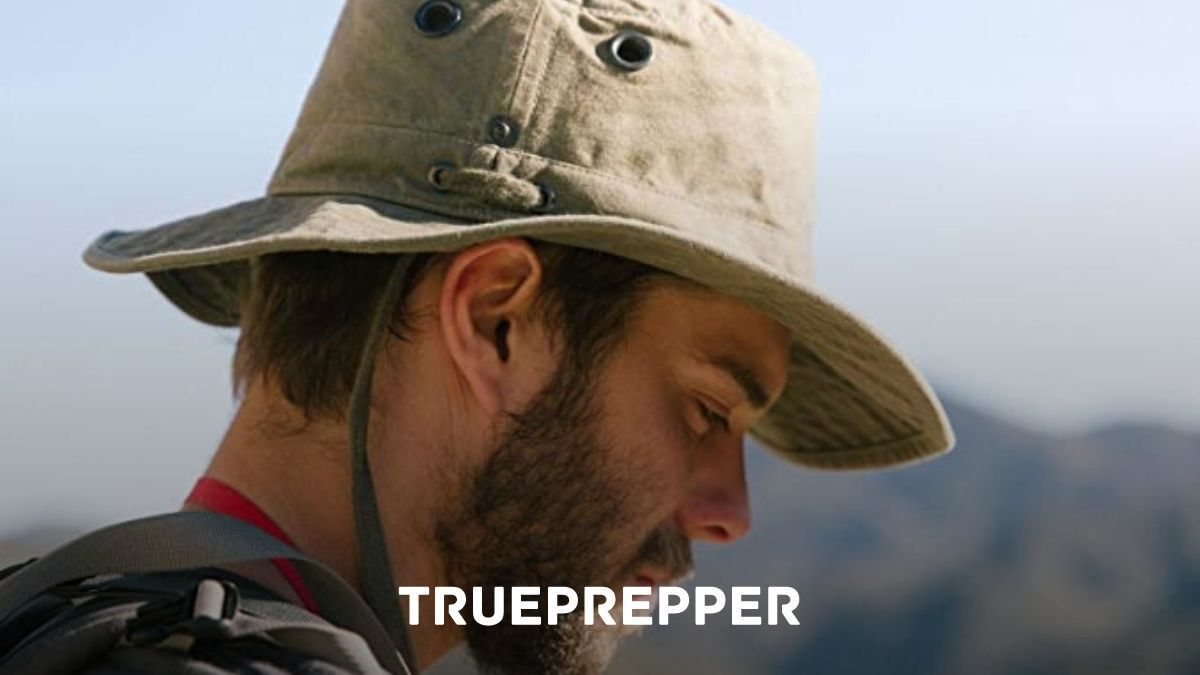
Gloves
Cowboys often carried leather gloves to protect their hands while working with cattle or horses. Dealing with wire, rope, and tough conditions made it important to protect their hands.
Gloves are still important for protecting your hands today. We review the best survival gloves annually, so we’re keen on great gloves for protecting your hands among other things.
Bandana
A bandana was a square piece of fabric, usually made of cotton, that cowboys wore around their neck or face for protection from the sun and dust. It could also be used as a cloth to wipe sweat from the face or to cover the mouth and nose during a dust storm.
They are still a great choice for sun and dust protection, and we’ve reviewed a few great bandanas.
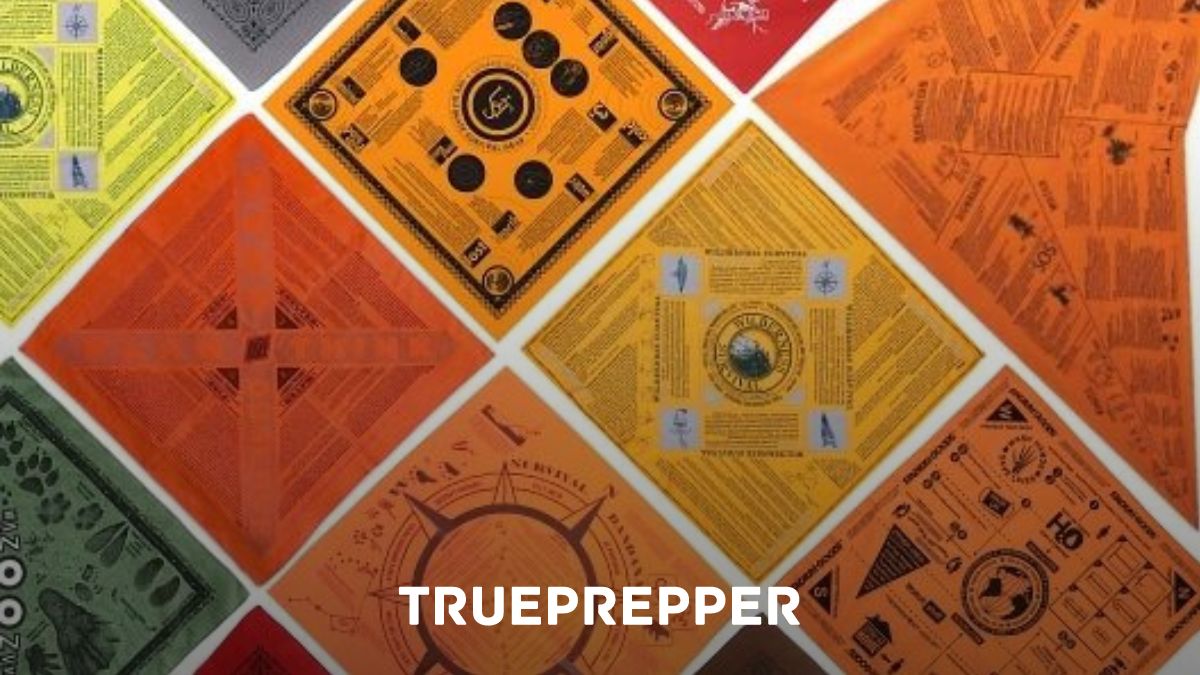
Soap & Towel
Cowboys needed to keep clean and often carried basic personal hygiene items with them.
These might include soap, a towel, a comb, and a toothbrush.
First Aid & Medicines
Cowboys carried basic first aid supplies for treating injuries or illnesses while on the trail.
This usually included bandages, antiseptics, and pain relievers.
Piggin Strings
A piggin string is a small, lightweight rope used for tying the legs of a calf. The rope was usually made of rawhide and was about 7-8 feet long.
You can make your own piggin string or tie string pretty easily, just follow Dale Brisby’s instructions:
Musical Instrument
Many cowboys enjoyed music and carried a small instrument, such as a harmonica or guitar, to play during their downtime.
Guitars added significant bulk to any cowboy EDC loadout, so only the very dedicated pickers took them out on the range.
Bible
Cowboys often carried a Bible or other reading material for entertainment or spiritual nourishment while out on the trail.
The Final Word
Cowboys had to rely on their gear to survive and do their job, so it’s no wonder the cowboy EDC loadout was comprehensive and full of self-sufficient gear. What a cowboy carried on them every day tells a story about hardship in the old west and dedicated people getting the job done.
Here are some other guides our subscribers have found helpful:
- The Best Survival Gloves | Reviews & Buying Guide
- Best Hats for Prepping and Survival
- Everyday Carry (EDC) Guide, Gear, and Checklist
Keep exploring, stay prepared, and be safe.
You’ve Been Missing Out
Join the 2+ million preppers that rely on our prepping advice by subscribing to TruePrepper.
- Practical guides and tips
- Useful survival giveaways
- Free, forever
- < 0.4% of people unsubscribe
Thanks for subscribing, reading, and welcome to the club.
The post Cowboy EDC | 22 Things Cowboys Carried Every Day appeared first on TruePrepper.
By: Rusty Collins
Title: Cowboy EDC | 22 Things Cowboys Carried Every Day
Sourced From: www.trueprepper.com/cowboy-edc/
Published Date: Mon, 15 May 2023 11:00:00 +0000
-------------------------------------------------------------------------
Did you miss our previous article...
https://outdoorsnewswire.com/survivalist/so-is-it-illegal-to-collect-rainwater-in-minnesota
 CampingSurvivalistHuntingFishingExploringHikingPrivacy PolicyTerms And Conditions
CampingSurvivalistHuntingFishingExploringHikingPrivacy PolicyTerms And Conditions
